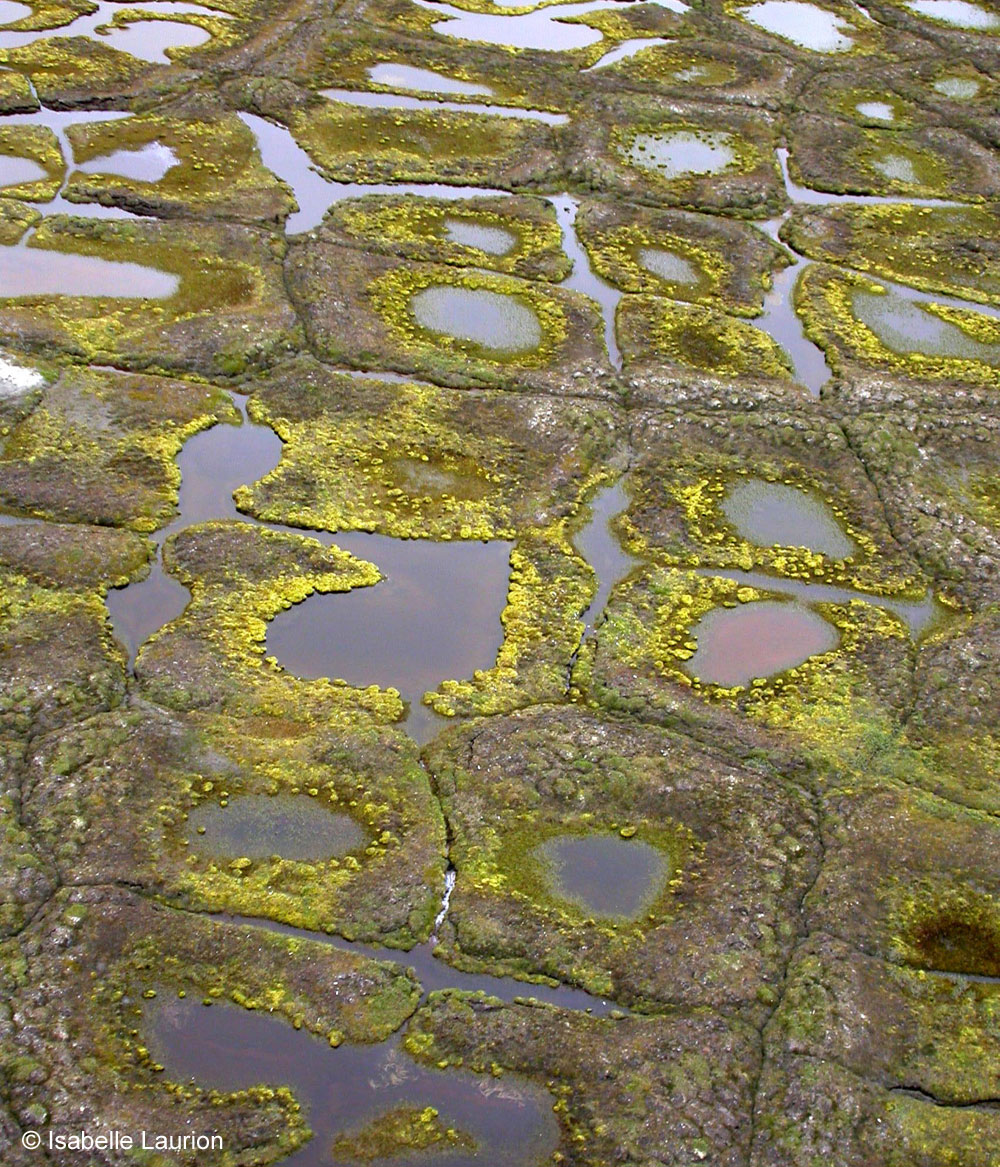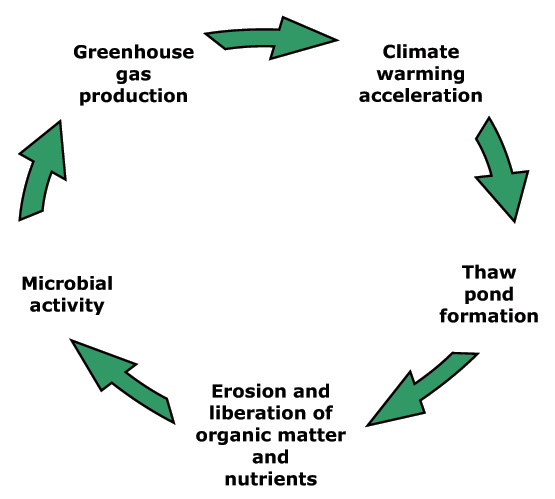Thaw ponds are shallow, water-filled depressions found in the permafrost zone. In Arctic zones, where the ground is permanently frozen, such as in Siberia, Alaska and northern Canada, these ponds form in a landscape characterized by ice-wedge polygons, which occur as a result of the seasonal freezing and thawing of organic ground. The superficial layer of permafrost, named the active layer, or mollisol, melts in the summer, creating small depressions. These hollows fill with water from melting snow and summer rainfall and are known as thaw ponds. These take on a rounded form when they occur in the middle part of depressed polygons or are elongated when they form on the periphery. This process of differential melting and soil erosion is normal, but in recent decades, it has become accelerated in several parts of the world.

This increase in the number of thaw ponds is rather alarming. Freshwater areas and wetlands represent an atmospheric carbon source for the atmosphere. Wetlands have been identified as the largest natural source of methane (CH4), a greenhouse gas (GHG) more powerful than carbon dioxide (CO2).
The tundra contains a significant amount of carbon trapped in the frozen ground. This carbon accumulated in the peat bogs thousands of years ago, during favorable climatic conditions. When the climate cooled, this carbon reserve became isolated from an active exchange cycle between the atmosphere and the biosphere. The rapid climatic warming we are experiencing today is bringing this carbon back into circulation. Some of it moves to freshwater sources and then to coastal marine areas; a fraction of this is emitted into the atmosphere in the form of GHG, and the rest sediments to the bottom of lakes and oceans. Thaw pond formation during permafrost melt periods might promote the freeing of carbon into the atmosphere by means of microbial activity, which is particularly vigorous in these nutrient rich areas. Where there is little or no oxygen, carbon is liberated as CH4, a GHG 27 times more powerful than CO2.
Climate warming could be accentuated by a significant release of greenhouse gases from the thaw ponds, and consequently, encourage further thaw pond formation and freeing of carbon into the atmosphere. Researchers propose that this phenomenon may represent a significant contribution to planetary CO2 and CH4 emissions, and that it may also explain an acceleration of warming greater than that foreseen by global climatic models. These models do not yet take into account these sources of GHG.
This cause-and-effect relationship can be seen in the following diagram:

|
This positive feedback loop can however be interrupted – or possibly modified – if the ponds dry out. This drying can be temporary (due to diminished precipitation) or permanent (when the permafrost melts further and no longer offers a physical barrier to water draining away, though this will depend upon adjacent geomorphology). In all cases, if vegetal re-colonization occurs and the pond regresses, CO2 exchanges can reverse due to plants’ photosynthetic activity, and the area can become a carbon sink. Carbon is thus held in the ground, instead of escaping into the atmosphere. In order to adequately the measure carbon budget however, one must be able to take into account not only CO2 exchange, but also CH4. This greenhouse gas is more difficult to measure than CO2, because of the inherent space-time variability of CH4 often escaping in bubble form.
| Why study thaw ponds? | Physicochemical portrait of a pond |
